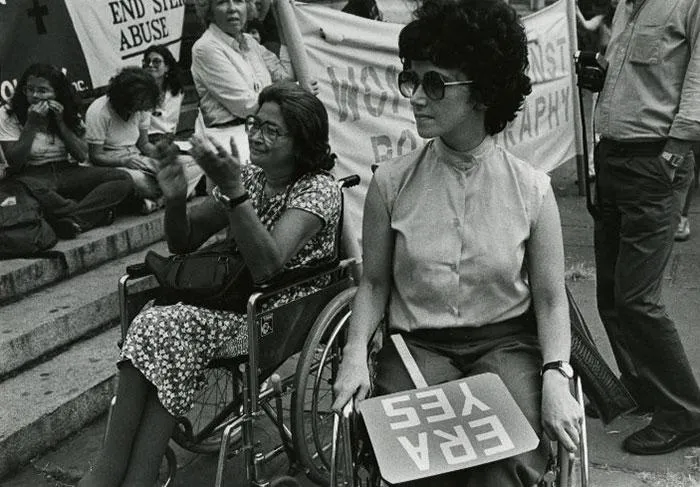These Photos Bring the Women’s Movement to Life
Catching the Wave dramatizes the large and small moments of second-wave feminism
Shirley Chisholm flexes unprecedented political potential as she smiles from the podium in one image. Another captures a woman mid-shimmy up a lamppost, where she's replacing a “Madison Avenue” sign with one that says “Dolly Madison Avenue.” A third shows women linking arms and marching for equality. The photographs are just a sampling of the many on display in Catching the Wave: Photographs of the Women’s Movement. The exhibition, which will be on view through March 17, 2017, at the Arthur and Elizabeth Schlesinger Library on the History of Women in America at the Radcliffe Institute at Harvard University, captures the sentiment that once defined America’s second wave of feminism.
Catching the Wave highlights the work of vaunted women’s movement photographers Bettye Lane and Freda Leinwand, in addition to that of four other professional photographers—Catherine Allport, Mima Cataldo, Diana Mara Henry, and Dorothea Jacobson-Wenzel—who spent the 1970s and 1980s documenting the women’s movement. Along the way, they captured the verve and tensions of the time full of hard fights for women insistent on holding their own.
Lane, a photojournalist, was one of the titular figures who documented the burgeoning women’s rights movement. “Even if she was not assigned to an event, she showed up anyway,” writes the Schlesinger’s Joanne Donovan. Lane donated over 1,700 images to the library and her work is also in the collections of the Library of Congress and other archives. Freda Leinwand, a dialogue and film editor turned photographer, documented the women’s movement during the same turbulent time.
Both Lane and Leinwand lived in Westbeth Artist Housing in Manhattan’s West Village during the '70s. The live-work spaces there were home to other feminist artists like Ruth Herschberger, too—and spawned a seminal second-wave feminist bastion, the New York Woman’s Literary Salon. Based out of Westbeth, the salon brought together writing women from all over New York, celebrating women writers in a time when women’s voices were often neglected within the literary mainstream.
Both women captured small moments of progress in a time when women entered the workforce in unprecedented numbers and pushed for parity in ways that were once unthinkable. But they also were on hand during the banner moments of the women’s movement, as when women marched down Fifth Avenue during the Women’s Strike for Equality March in August 1970. The demonstration, which celebrated the 50th anniversary of the passage of the 19th Amendment, brought together more than 20,000 women demanding social equality and was a cornerstone of second-wave feminism that brought unprecedented visibility to the movement.
The photographs on display during the exhibition don’t just focus on the overt moments of the women’s movement. They also deal with related subjects like gay rights, politics and peace activism that brought women together during a time of turmoil and public displays of discontent.
The political and social standing of women may have changed during the intervening years. But exhibitions like Catching the Wave are a reminder that the passions behind women’s struggles for equality—on the podium, in private and in the streets—are as relevant as ever today.
/https://tf-cmsv2-smithsonianmag-media.s3.amazonaws.com/accounts/headshot/erin.png)





/https://tf-cmsv2-smithsonianmag-media.s3.amazonaws.com/accounts/headshot/erin.png)
